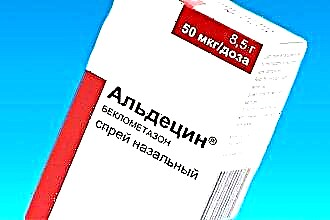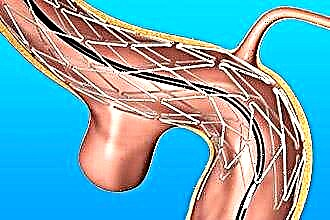 To quickly get rid of a cold, you need to choose the right drugs. With an allergic origin of rhinitis, antihistamines are needed. With a viral rhinitis, there are enough immunomodulators and vasoconstrictor drops.
To quickly get rid of a cold, you need to choose the right drugs. With an allergic origin of rhinitis, antihistamines are needed. With a viral rhinitis, there are enough immunomodulators and vasoconstrictor drops.
In most cases, people first start using vasoconstrictor sprays, and only when they are ineffective do they think about the cause of the disease. This tactic leads to the development of complications associated with both the disease itself and the long-term use of drugs in this group. To understand why rhinorrhea appeared, one should analyze the period that preceded the appearance of the first symptoms of the disease.
What should interest us?
- contact with an allergen;
- the use of new products;
- taking any medications;
- communication with a person suffering from a viral disease;
- hypothermia.
At the initial stage of rhinitis, mucous discharge runs in a large volume, which is a protective reaction of the mucous membrane aimed at flushing allergens and microbes from the nasal passages. As the disease progresses, the mucus becomes thicker, acquiring a yellowish tinge. In this case, it is more likely that the rhinitis is due to a cold or viral infection.
If transparent discharge continues to run for 7-10 days, it is worth suspecting the allergic origin of the common cold.
Consider the most commonly prescribed drugs for rhinorrhea:
- vasoconstrictor agents;
- antihistamines.
There are three groups of medicines that differ in the active substance:
- preparations based on naphazoline (Sanorin, Naphtizin);
- drugs with ximetazoline (Xymelin, Rinorus, Galazolin);
- nasal spray with oxymetazoline (Nazol, Nesopin).
Drops with naphazoline
Medicines based on naphazoline were previously widely used in diseases of the upper respiratory tract.
Naphthyzine has a high risk of addiction. It irritates the mucous membrane, which slows down the healing process.
The duration of the therapeutic effect is 4 hours, after which re-instillation of the nasal passages is required.
The action of the drug is based on local vasospasm, which develops after applying the solution to the nasal mucosa. The result of vasoconstriction is a reduction in hyperemia, tissue swelling and rhinorrhea.
Indications and contraindications
Naphazoline is prescribed for the treatment of:
- allergic rhinitis;
- inflammation of the mucous membrane of the paranasal sinuses;
- eustachitis;
- acute form of rhinitis;
- postoperative mucosal edema.
As an adjunct, it is used to treat conjunctivitis.
 Contraindications include:
Contraindications include:
- individual intolerance to the constituents of the drug;
- severe hypertension;
- increased production of thyroid hormones;
- severe atherosclerotic vascular disease;
- taking antidepressants;
- age up to three years;
- diabetes;
- failure of the cardiac rhythm.
Dosage
If water flows from the nose, you can drip it with Naphazoline. It is recommended to inject 1-3 drops daily up to four times into the nasal passage. For treatment, a therapeutic solution with an active substance concentration of 0.05% (for a child), as well as 0.1% (for adults) can be used.
The dosage for children is reduced depending on age:
- 1-6 years old - 1 drop each;
- 6-15 years old - two drops each.
The frequency of instillation can vary from one to three times a day. For diagnostic purposes, before performing a rhinoscopy, it is recommended to insert a tampon moistened with a solution into the nasal passage. The duration of the procedure is 2 minutes.
Adverse Reactions
Naphazoline has many side reactions, among which it is worth highlighting:
- nausea;
- cardiopalmus;
- headache;
- increased blood pressure;
- increased nasal congestion due to increased tissue edema;
- reactive hyperemia;
- irritation of the mucous membrane;
- sneezing;
- drying out of the mucous membrane.
In case of an overdose, a decrease in temperature is possible, as well as a slowdown in the heart rate and atrophy of the nasal mucosa.
Usually, a vasoconstrictor is given for 5 days, after which the risk of tachyphylaxis increases. The fact is that local blood vessels, when the recommended course of therapy is exceeded, get used to the action of the drug. They become more resistant to the vasoconstrictor action, which requires the instillation of a larger dose of the solution to stop rhinorrhea and restore nasal breathing.
Ximetazoline based medicines
Ximetazoline-based drugs are prescribed much more often than drugs with naphazoline. The vasoconstrictor effect lasts up to 8 hours, so the frequency of their introduction should not exceed three times a day.
Drugs are prescribed for therapy:
- acute forms of allergic rhinitis;
- viral, colds rhinitis;
- hay fever;
- sinusitis;
- inflammation of the mucous membrane of the Eustachian tube and ear cavities.
In addition, the drug is used before a diagnostic examination to clearly visualize the nasal cavities.
Contraindications
 Application restrictions include:
Application restrictions include:
- uncontrolled arterial hypertension;
- hypersensitivity to the components of the medicinal solution;
- glaucoma;
- severe vascular atherosclerosis;
- cardiopalmus;
- atrophic type of rhinitis;
- increased levels of thyroid hormones in the blood;
- children under 2 years old or 12 years old (depending on the concentration of the medicinal solution).
Caution in treatment should be observed for people with angina pectoris, prostate hypertrophy, diabetes mellitus.
As for the appointments during pregnancy, during the lactation period, the indications are made exclusively by the doctor, taking into account the severity of the common cold and the presence of concomitant diseases.
Dosage
Ximetazoline preparations are available in the form of drops, spray and gel:
- drops for intranasal administration are used no more than three times a day (2-3 drops each). A child can be prescribed a 0.05% solution 1-2 times dropwise;
- the gel is allowed for adults, children over the age of seven. During the day 3-4 times the gel should be applied to the nasal mucosa (as deep as possible);
- the spray is used for children from six years of age. At a young age, the spray is not recommended because of the high risk of the solution entering the ear cavity through the short auditory tube.
Side effects
Medicines, if used incorrectly, can cause the following side reactions:
- irritation of the mucous membrane; sneezing;
- dryness of tissues in the nasal passages;
- burning sensations;
- violation of skin sensitivity;
- increased tissue edema;
- an increase in the volume of mucous secretions;
- cardiopalmus;
- violation of cardiac work;
- increased blood pressure;
- insomnia;
- nausea, vomiting;
- headache;
- visual dysfunction.
 In case of an overdose, an increase in adverse reactions is observed.
In case of an overdose, an increase in adverse reactions is observed.
To obtain the maximum therapeutic effect, it is recommended to cleanse the mucous membrane with 0.9% saline solution before instilling the nasal passages. In the presence of dry crusts, the medicine should be used in the form of a gel.
It is important to remember that ximetazoline is not antidepressant compatible.
Oxymetazoline aerosols
Thanks to the healing effect of oxymetazoline, it is possible to quickly eliminate rhinorrhea, nasal congestion and facilitate nasal breathing.Among the popular drugs, which include oxymetazoline, it is worth highlighting Nesopin, Nazol.
Intranasal drugs are prescribed for:
- allergic rhinitis;
- runny nose of infectious origin;
- inflammation of the mucous membrane of the auditory tube;
- sinusitis;
- edema of the conjunctiva of various origins.
Contraindications
Medicines are not used for conditions such as:
 individual intolerance to the constituent components;
individual intolerance to the constituent components;- atrophy of the tissues of the nose;
- cardiac insufficiency;
- violation of the cardiac rhythm;
- severe vascular atherosclerosis;
- hyperproduction of thyroid hormones;
- uncontrolled arterial hypertension;
- renal insufficiency;
- glaucoma;
- diabetes.
Method of application and side effects
From the age of 12, the drug is prescribed 2 drops (2 sprays) twice a day. The interval between the instillation of the nasal passages should not be less than 10 hours. Typically, the drug is used in the evening to promote normal nasal breathing throughout the night.
At the age of six years, it is not recommended to exceed the dose - 1 spray or 1 drop twice a day.
If the recommendations regarding doses and duration of the therapeutic course are not followed, the risk of occurrence of:
- dryness, burning sensations in the nasal passages;
- sneezing;
- perspiration in the nasopharynx;
- arterial hypertension;
- irritability;
- nausea;
- dizziness;
- headache;
- insomnia;
- heart palpitations.
Antihistamines
If the runny nose is of an allergic nature, the patient is prescribed drugs with an antihistamine effect to block histamine receptors that stimulate the development of an autoimmune reaction. The consequence of this is a decrease in tissue edema, rhinorrhea, as well as restoration of the patency of the nasal passages for air. Allergodil is available in the form of an intranasal spray. After using the medicinal solution, its partial absorption into the systemic bloodstream is possible. Take the opportunity to play demo slots for free
The drug is prescribed for seasonal and year-round allergic rhinitis.
Dosage
One dose should be sprayed into each nasal passage twice a day. Depending on the severity of the disease, dosage adjustments can be made with an increase in the frequency or volume of a single injection of the drug.
The maximum duration of the course of antihistamines should not exceed six months.
Often the spray is well tolerated, but in some cases, adverse reactions such as:
- bitterness in the mouth;
- burning, itching sensations;
- nausea;
- nasal bleeding;
- sneezing;
- skin rashes.
Contraindications
Among the contraindications, it is worth focusing on hypersensitivity and the age of up to six years.
Note that antihistamines can have a depressing effect on consciousness, therefore, during the course of the treatment course, you should be careful when driving. Similar side effects are observed with overdose. Increased heart rate and hypotension are also possible.
Remember that drugs for intranasal administration are only part of the therapy. The main task is to eliminate the cause of the disease and compose a comprehensive treatment.

 individual intolerance to the constituent components;
individual intolerance to the constituent components;

